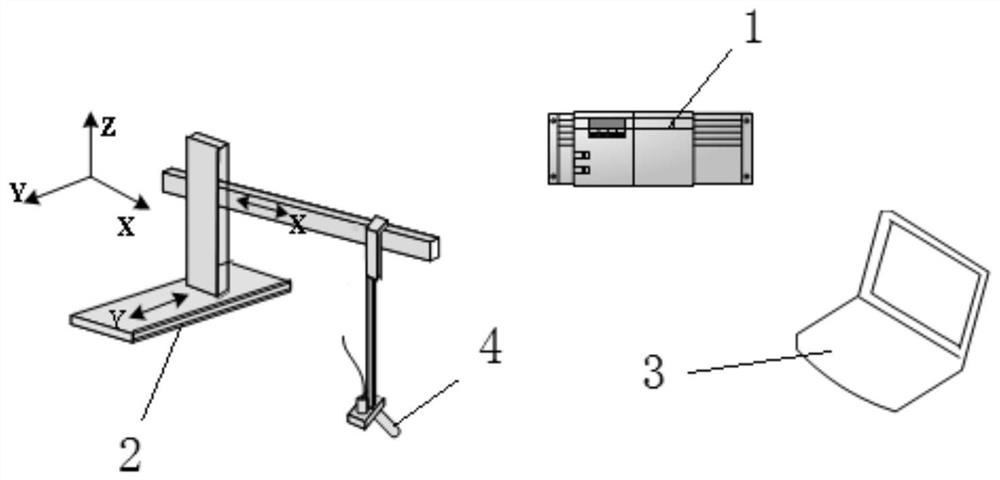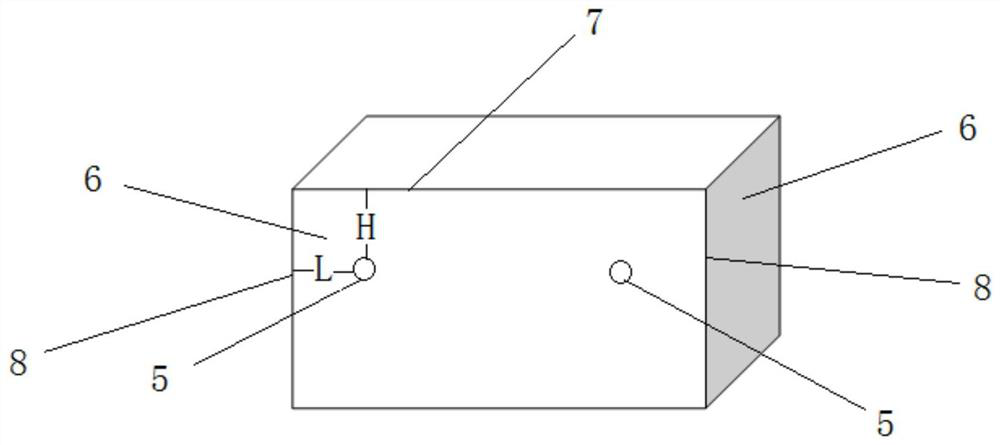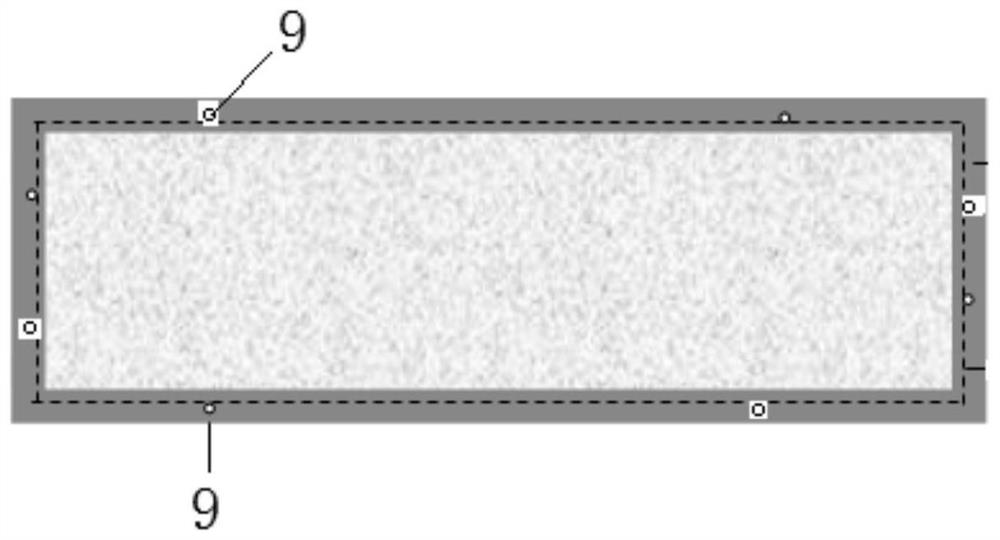A Method of Ultrasonic Imaging to Detect Part Edge
A technology of ultrasonic imaging detection and parts, which is applied in the processing of detection response signals, the use of sound waves/ultrasonic waves/infrasonic waves to analyze solids, and the use of sound waves/ultrasonic waves/infrasonic waves for material analysis, etc. It can solve problems such as difficult size evaluation and achieve physical measurement Method Accurate Effect
- Summary
- Abstract
- Description
- Claims
- Application Information
AI Technical Summary
Problems solved by technology
Method used
Image
Examples
Embodiment Construction
[0028] The technical scheme of the present invention will be described in further detail below in conjunction with the accompanying drawings and embodiments:
[0029] see attached Figures 1 to 3 As shown, in this embodiment, a superalloy test block with a size of 100mm × 50mm × 50mm is selected to detect, the ultrasonic testing instrument 1 is USIP 40, the mechanical scanning system 2 is SM-J6B-100, and the inspection result imaging system 3 is a Computer, ultrasonic testing probe 4 is a 10MHz focusing probe, steel metal ball 5 has a diameter of 0.5mm, and the probe detects a water distance of 40mm. The metal ball 5 is bonded to the four side walls 6 of the detected part, and the bonding The distance L from the horizontal position to the edge (8) is 30mm, the width of the defect detection signal gate is 5-30mm, and the sticking depth of the ball is 5mm below the upper surface. The detection sensitivity is to adjust the Φ0.8mm flat bottom hole within the depth range of 5-30mm...
PUM
| Property | Measurement | Unit |
|---|---|---|
| diameter | aaaaa | aaaaa |
| distance | aaaaa | aaaaa |
| diameter | aaaaa | aaaaa |
Abstract
Description
Claims
Application Information
 Login to View More
Login to View More - R&D
- Intellectual Property
- Life Sciences
- Materials
- Tech Scout
- Unparalleled Data Quality
- Higher Quality Content
- 60% Fewer Hallucinations
Browse by: Latest US Patents, China's latest patents, Technical Efficacy Thesaurus, Application Domain, Technology Topic, Popular Technical Reports.
© 2025 PatSnap. All rights reserved.Legal|Privacy policy|Modern Slavery Act Transparency Statement|Sitemap|About US| Contact US: help@patsnap.com



